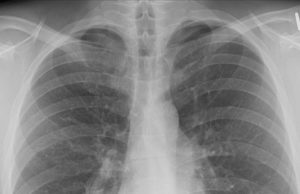The safety of vaping during pregnancy is a widely debated topic, with experts holding conflicting views. Some researchers and public health advocates argue that for pregnant women who find it difficult to quit nicotine completely, vaping may be a safer alternative to traditional smoking. While others strongly advise against vaping, warning that the long-term impact of inhaling vape additives and flavouring agents remains unclear.
Given that many vapes contain menthol, a group of researchers used human embryonic stem cells to find out whether menthol, in various concentrations, disrupts calcium balance in embryos and interferes with important early developmental processes. Titled, “Menthol, a consumer product additive, adversely affects human embryonic stem cells via activation of TRPM8 and TRPA1 channels,” the current study suggested that higher levels of menthol reduced the activity of mitochondria (the energy producers in cells).
More specifically, the research team reported that low levels of menthol slowed cell growth while higher levels led to cell death. Menthol also changed the shape and movement of cell colonies, which are crucial for proper development. These effects were linked to disruptions in calcium levels, which play a key role in cell survival, growth, and migration—processes essential for forming a healthy embryo.
The study suggests that the amount of menthol an embryo is exposed to when a pregnant woman vapes is enough to activate these channels and disturb calcium balance. This could increase the risk of birth defects or even fetal loss. However, given that this study was conducted in a controlled lab setting, not in vivo, other researchers would argue that the findings cannot be considered fully reliable.
Similarly, a research team from the University of Alberta is strongly cautioning against the use of e-cigarettes during pregnancy, emphasizing that vaping is not a safe alternative to smoking. Their findings, recently published in the Journal of Hazardous Materials, analyzed global research and reported significant risks associated with prenatal vaping for both mothers and their newborns.
Taking a closer look at the listed risks
The study reviewed data from 23 research papers, covering a total of 924,376 participants, including 7,552 individuals who exclusively vaped during pregnancy. The results suggested that women who used e-cigarettes while pregnant had 53% higher odds of experiencing adverse health outcomes compared to those who did not smoke or vape.
For infants, prenatal vaping was linked to a 53% higher likelihood of complications such as low birth weight, preterm delivery, and smaller-than-average size for gestational age. However, among these adverse outcomes the researchers included lower odds of breastfeeding and prenatal care, very curious factors to consider given that these are behavioral choices which undoubtedly are not a side effect of vaping. These preferences would be more indicative of a personality type, rather than anything else.
“The findings of this systematic review and meta-analysis of 25 studies demonstrated that vaping during pregnancy was associated with 53 % increased odds of adverse maternal outcomes in a meta-analysis of 16 studies. In particular, prenatal vaping was significantly associated with 47 % lower odds of breastfeeding and 31 % lower odds of prenatal care; however, its associations with other maternal outcomes, such as depression, diabetes, and hypertension, were not statistically significant.”
Experts involved in the study stressed that a fetus is highly vulnerable to chemicals present in the mother’s bloodstream. Paige Lacy, a professor of medicine, explained that harmful substances in e-cigarettes can interfere with fetal cell division, a process critical for healthy development. Some of these chemicals, though tolerable for adults, may have teratogenic effects on the fetus, potentially leading to developmental abnormalities.
Unfortunately, showing their lack of knowledge about vapes, the research team pointedto the presence of toxic heavy metals like lead, cadmium, and nickel in e-cigarette vapor, along with other potentially hazardous additives such as polyethylene glycol and diacetyl. The latter, a chemical used in flavouring, has been linked to popcorn lung, said the researchers.
Are the researchers’ concerns valid?
Sadly, these remarks are nothing but an example of how misinformation originates. In actual fact, early vaping products contained diacetyl at an average of nine micrograms per cartridge, which is significantly lower than the current levels found in traditional cigarettes. Given that even heavy smokers have never developed popcorn lung from cigarette use, it is highly unlikely that vapers would ever be at risk.
Similarly, a study by renowned cardiologist and tobacco harm reduction researcher Dr. Konstantinos Farsalinos had reported that the alleged “significant amount” of metals found in vapes, in reality is so low that, in some cases one would need to vape over 100 ml per day to exceed the FDA’s daily intake limits for inhalational medications.
Meanwhile, the University of Alberta researchers also bemoaned the fact that vaping is often considered a smoking cessation tool, leading some pregnant women to believe it is a safer alternative to cigarettes. Given the sound research indicating that this is indeed the case, the study seems steeped in bias and misinformation. Tobacco harm reduction experts have in fact consistently argued that those pregnant smokers who have tried quitting and failed, should at least switch to vaping in order to reduce harm.
Misinformation and bias in scientific research and public health discussions can have serious consequences, especially when it comes to issues like vaping during pregnancy. Studies that present incomplete or misleading data may contribute to unnecessary fear and confusion, preventing individuals from making informed choices. In the case of vaping, exaggerated claims about chemical exposure and flawed interpretations of statistical findings can undermine legitimate harm reduction strategies. Public health policies should be based on objective, well-contextualized evidence rather than alarmist narratives. Ensuring accuracy and transparency in research is essential to providing pregnant women with the best possible guidance for their health and their baby’s well-being.












